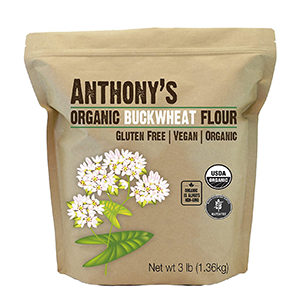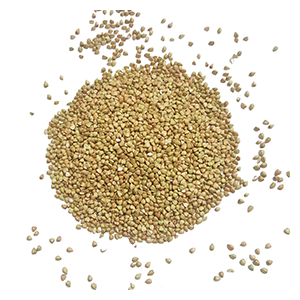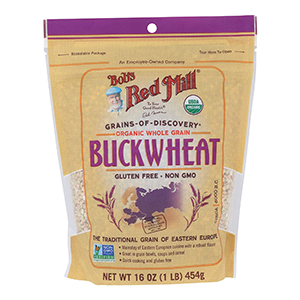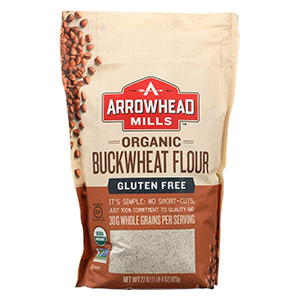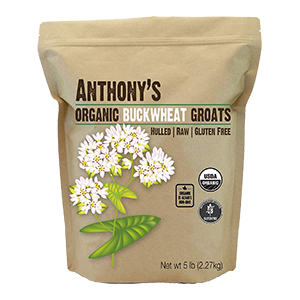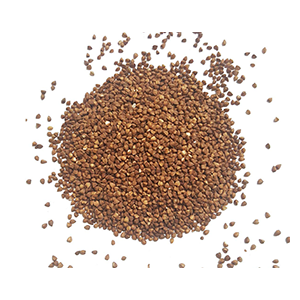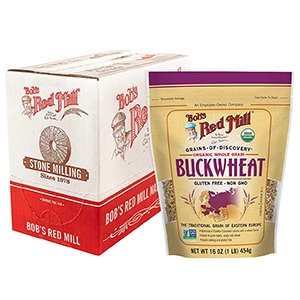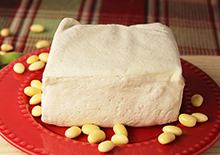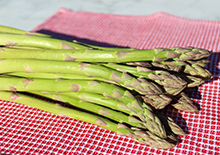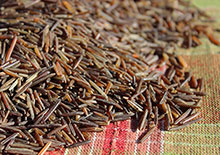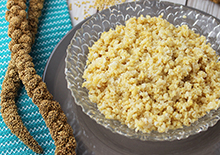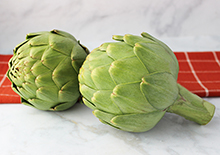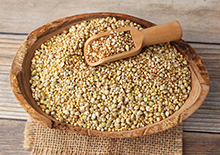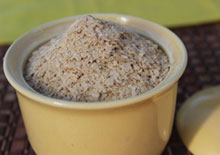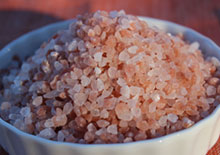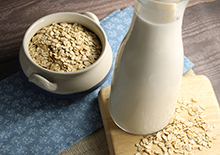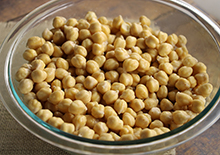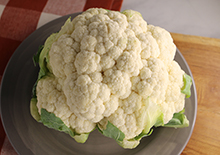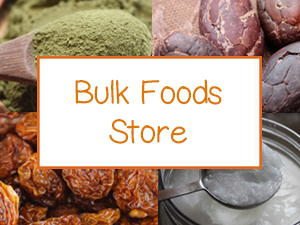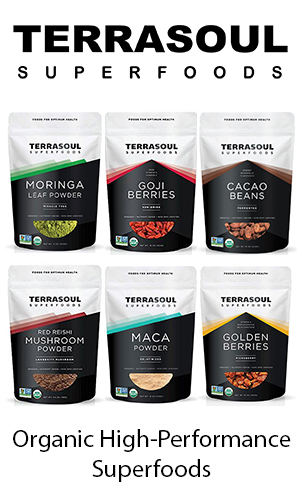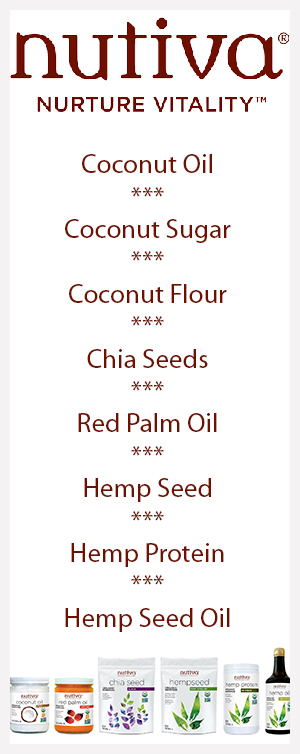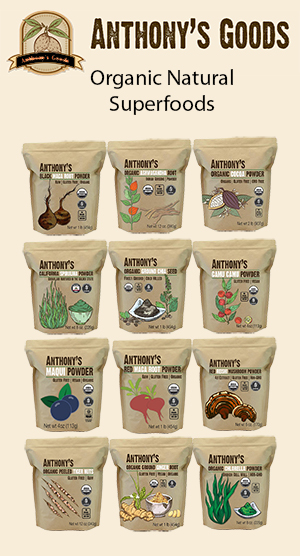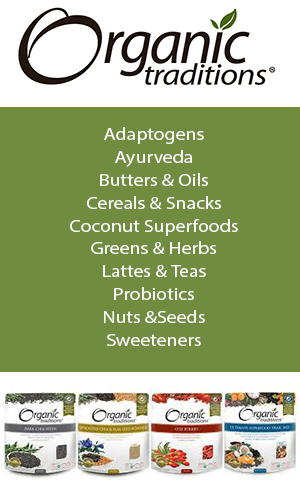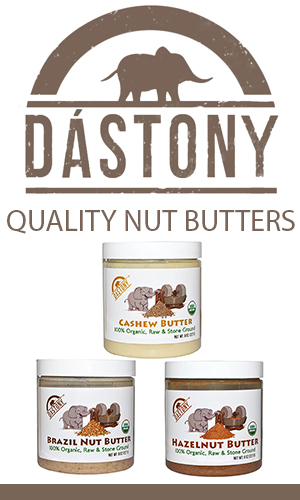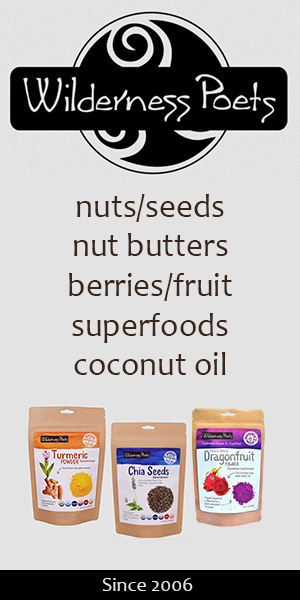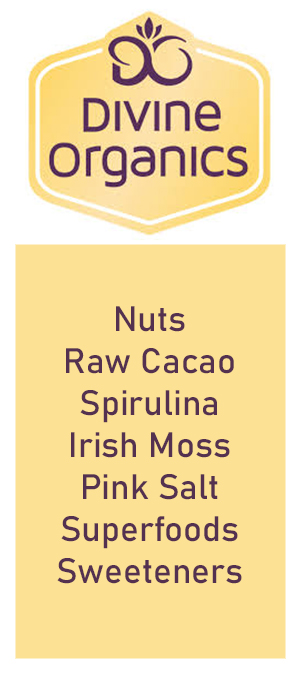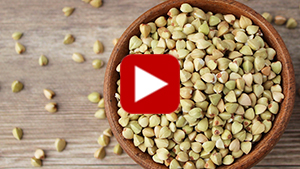- Home
- Plant-Based Cooking
- Buckwheat Groats
Buckwheat Groats, A Multipurpose Gluten-Free Grain Option
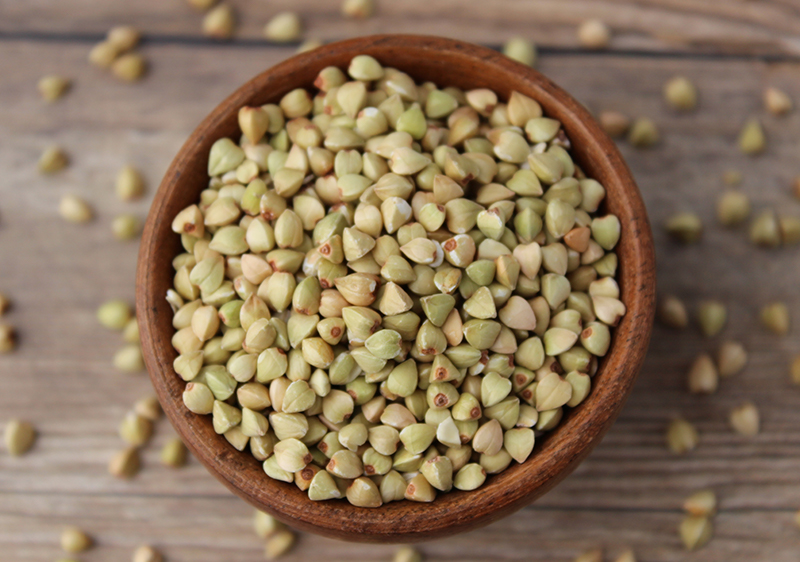
Buckwheat groats are the triangular-shaped grain-like seeds of the buckwheat plant. The two main species are Fagopyrum esculentum and Fagopyrum tataricum.
Whole seeds straight from the plant have a dark brown-black hull surrounding the inner seed. While buckwheat hulls are used for a number of different industrial purposes when removed the buckwheat groat is what is cooked as a type of grain.
Table of Contents
Intro | 6 Things Good For | How to Cook Buckwheat | Precautions | Shop
In the U.S., they are not as popular as other types of grains and whole groats can be hard to find in many mainstream markets. You may be more likely to find buckwheat flour than the bulk groats themselves. Online suppliers are sometimes your only alternative. Go to many countries in Eastern Europe, however, and buckwheat is a frequently available food item.
List of 6 Things Buckwheat Groats are Good For
1) Gluten-Free Grain Option
2) Quick-Cooking Grain
3) Raw Buckwheat Groats Vs Kasha
4) Versatile Buckwheat Uses
5) Traditional Cultural Dishes
6) Nutritional Properties
1) Gluten-Free Grain Option
Buckwheat, despite its name, is not a type of wheat or from the grass family but a pseudocereal closely related to rhubarb and sorrel. This means it does not contain gluten, making it a gluten-free alternative to those with sensitivities.
While many people don't experience major health issues after consuming glutenous foods, some simply feel less fatigued with improved digestion when maintaining a gluten-free diet.
As a flour, grain or pasta replacement to wheat, buckwheat might be one to include along with other plant-based gluten-free favorites like quinoa, amaranth, sorghum, millet, teff and oats.
We
first started using buckwheat as a staple grain in the late 1990s when
it was first introduced to many health seekers in the book "The Body
Ecology Diet" which promoted certain non-glutenous grain varieties as
part of a protocol for balancing gut microbiota.
When purchasing buckwheat, it is best to look for labels that certify it's gluten-free to ensure it has not been contaminated with gluten in processing facilities.
2) Quick-Cooking Grain
One of the advantages of buckwheat groats, when prepared as a cooked grain, is that it only takes about 15-20 minutes to cook, depending on water to ratio preferences. They're thus a good one to have in your pantry when making a last-minute meal.
When steamed like rice the groats pop open into rounded grain-like morsels with a soft texture similar to barley.
We share more on how to cook buckwheat below, but generally, most people use 2-3 cups of water for one cup of whole groats. We personally enjoy more water-to-grain ratio for a softer well-cooked consistency.
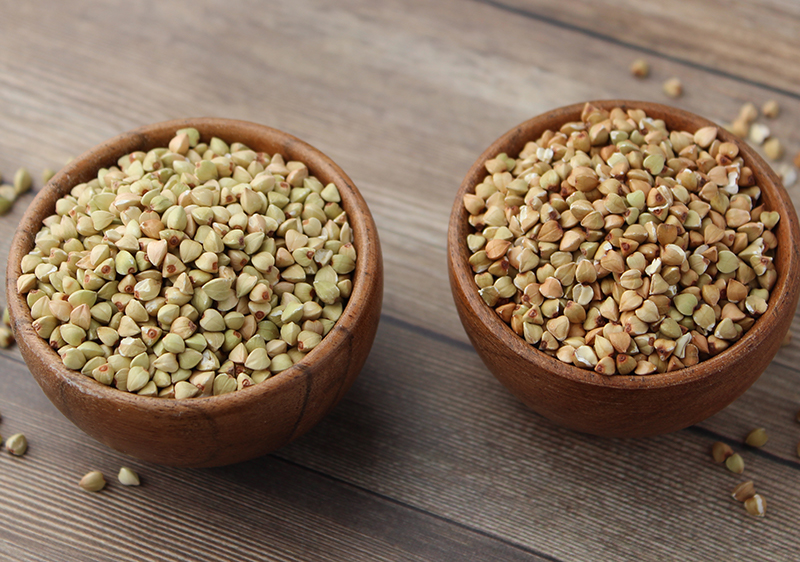
3) Raw Buckwheat Groats Vs Kasha
Raw buckwheat groats are a tan to a greenish color and when cooked have a distinct earthy buckwheaty flavor. In our opinion, they are one of the best tasting on the list of grain options.
Raw groats are also commonly pre-toasted before cooking, turning the seeds a golden-brown color. This type is called kasha and is often commercially available sometimes even more than the raw groat variety. When cooked it has an intensified nutty sweet taste and softer porridge-like consistency.
Buckwheat kasha, sometimes called grechka, is a very common food in Russia and many East-Central and Eastern European countries. In several Slavic languages, the term "kasha" coincides with the English meaning for both porridge or it can refer to the toasted groats themselves.
4) Versatile Buckwheat Uses
There are many ways to utilize buckwheat groats. Like wheat, it has many multipurpose uses especially as a type of flour. Interestingly, buckwheat flour is sometimes commercially processed with some portion of the darker hull. This can give it a slight grey color and darker look compared to other flours.
Buckwheat flour is very popular for pancakes, flatbreads, crispbread, crêpes and many baked goods because of its unique taste and binding quality. It is famous for its use in Japanese soba noodles.
Buckwheat groats are also a popular sprouting variety. When raw groats are soaked and sprouted for a couple of days, they can be used straight to make the probiotic drink known as rejuvelac or dehydrated to make a granola-type cereal called "buckwheaties."
When buckwheat sprouts are ground, they produce a dough that can be useful for making dehydrated pizza crusts.
Dark unhulled seeds are the ones you need to grow buckwheat microgreens, a popular variety because of their dense foliage.
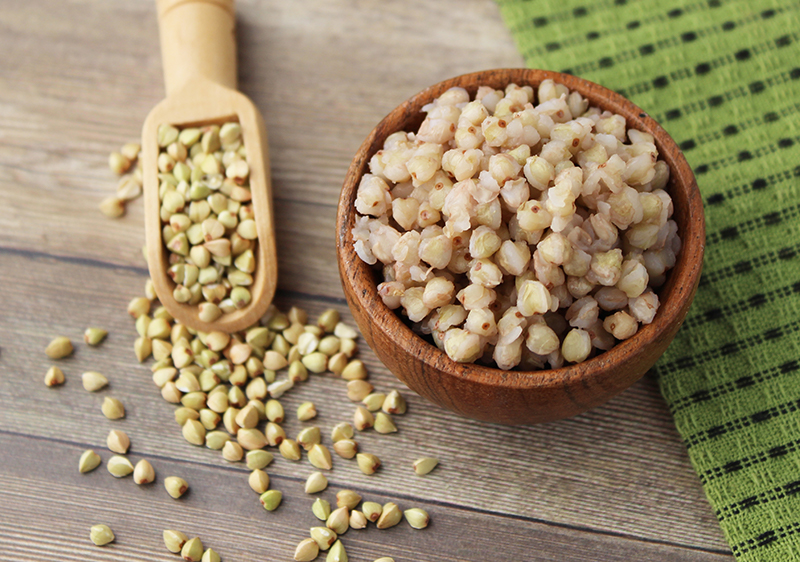
5) Traditional Cultural Dishes
Fagopyrum tataricum, also called Tartary buckwheat, was first believed to be cultivated in East Asia near regions close to the Tibetan Plateau. From there, its popularity as a cooked ancient grain staple made its way over to Eastern Europe.
As a result, cooked buckwheat has influenced many cultural dishes spanning this widespread territory.
Some popular dishes include:
- Buckwheat Grechka, a type of Russian porridge consisting of cooked kasha served with butter.
- Kasha Varnishkes, a type of Jewish dish with cooked buckwheat and bow-tie pasta.
- Galette-Saucisse, a type of French food using a buckwheat flour crêpe wrapped around a pork sausage.
- Makguksu, a type of South Korean cold salad made with buckwheat noodles, chicken and vegetables served with sesame oil, vinegar and hot pepper paste.
6) Nutritional Properties of Buckwheat Groats
Buckwheat is high in resistant starch content which becomes evident when the groats are soaked in water producing a mucilaginous goopy consistency. This aspect adds to its dietary fiber and prebiotic influence.
Compared to other gluten-free grain types like teff, amaranth, quinoa, sorghum and millet, buckwheat is one of the lowest in calories.
Another nutritional advantage that buckwheat offers is that it is relatively low in phytic acid content, making it easier to digest.
Buckwheat is shown to contain both rutin and quercetin, polyphenols with antioxidant properties. (*)
Cooked buckwheat kasha, is also a source of proteins which have high LYSINE levels and other amino acid content.
BUCKWHEAT - One Cup Cooked
Protein - 5.7g, 11%
Carbohydrate - 33.4g, 11%
Fiber - 4.54g, 18%
Calories - 155, 8%
Fat - 1.04g, 1%
Manganese - 0.677mg, 33%
Magnesium - 85.7mg, 21%
Copper - 0.245mg, 12%
Phosphorus - 118mg, 11%
Niacin - 1.57mg, 8%
Zinc - 1.02mg, 7%
Iron - 1.34mg, 7%
Vitamin B6 - 0.129mg, 6%
Folate - 23.5mcg, 6%
Selenium - 3.7mcg, 5%
Thiamin - 0.067mg, 4%
Potassium - 148mg, 4%
Riboflavin - 0.066mg, 4%
Calcium - 11.8mg, 1%
Sodium - 6.7mg, 0.28%
One cup of cooked buckwheat, according to nutrition data, contains about 18% the DV for FIBER, as well as the nutrients magnesium, manganese, copper, phosphorus, niacin, iron, zinc and smaller amounts of other vitamins and minerals.
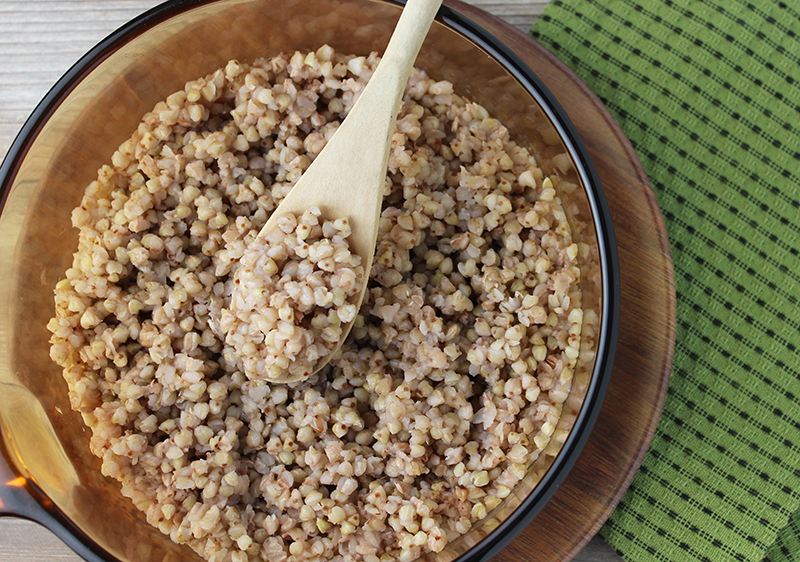
How to Cook Buckwheat
We prefer a softer buckwheat consistency and use 2 ½ C water per 1C dry groats. However, some may prefer 2 C water for a firmer texture.
It is good to soak grains prior to cooking to improve overall digestibility.
Ingredients:
- 1C buckwheat groats
- 2 - 2 ½ C water
- 1/8t pink salt
Directions:
- Rinse buckwheat groats and strain water. (Or, soak for 1 hour but use 1C less water when cooking.)
- Using a stovetop method, boil water and then add buckwheat and salt.
- Place the lid on the pot and turn to the lowest heat setting.
- Cook for about 15-20 minutes or until water is absorbed.
- Remove from heat and allow to sit with the lid on for 5-10 minutes.
Precautions:
While cooked buckwheat groats are generally safe to consume, prolonged use of buckwheat microgreens can contain fagopyrins which can cause skin sensitivities when exposed to sunlight. Consult your healthcare professional before consuming buckwheat on a regular basis if you are pregnant, nursing, have a serious health condition or are taking any medications.
Shop Related Products (About Affiliates & Amazon Associate Paid Links)
Affiliate Disclaimer: This section contains affiliate product links. If you make a purchase through our recommended links, we receive a small commission at no additional cost to you. Thanks for the support.

